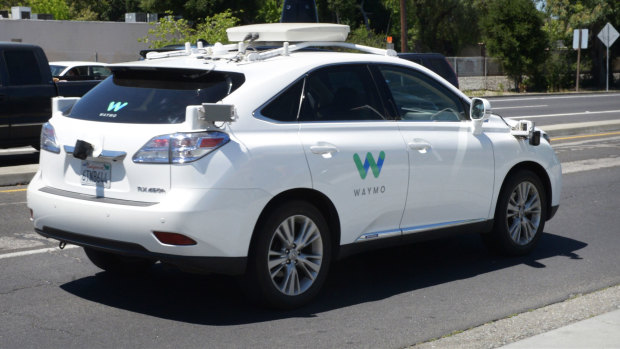
It's been said that the most dangerous part of a car is the nut behind the wheel.
The "nut", of course, refers to the driver, who is prone to mistakes, missteps, and, on occasion, some serious dumbness. Eliminating the human factor has been one of the main selling points of autonomous vehicles.
DON'T MISS: Tesla Rival Kia Has Awful News About Its Electric Vehicles
Supporters of the technology point to such benefits as a reduction in car crash-related costs, less strain on the healthcare system, more efficient transportation, and better fuel savings.
A group of San Franciscans realized that they can disable Waymo and Cruise robotaxis by placing a traffic cone on the vehicle's hood.
— David Zipper (@DavidZipper) July 6, 2023
They're now encouraging others to do it: "Hell no, we do not consent to this." pic.twitter.com/ZrYhy4OATy
Tesla (TSLA) -) CEO Elon Musk has touted the wonders of autonomous vehicles and makes annual promises that his cars will soon drive themselves.
Traffic Cones Used in Protest
However, protestors in San Francisco are reportedly giving new meaning to the phrase "road rage" as they take on the autonomous vehicles that have been rolling around the City by the Bay.
A group calling itself Safe Street Rebel, which advocates for pedestrian safety and reducing the number of cars on roads, is encouraging people to put traffic cones on the hoods of driverless vehicles.
A video posted on Twitter shows the cone crowning of autonomous vehicles. while a narrator says driverless cars "block buses emergency vehicles and everyday traffic."
"And they're partnering with police to report everyone all the time without anyone's consent," the video says, "and most importantly they require streets that are designed for cars not people or transit."
The video says cones "are everywhere" and then tells people to "directly place it on the car's hood--make sure their car is empty and repeat--it's really fun and anyone can do it."
The protests come as California Public Utilities Commission is scheduled to meet on July 13 to decide if AV companies can expand the number of vehicles they operate in San Francisco and robotaxis' hours of operation, from the middle of the night to round-the-clock.
Cruise, a General Motor (GM) -) subsidiary specializing in autonomous technologies, and Waymo, Alphabet's (GOOGL) -) self-driving division, are both operating autonomous in the city.
More Business of EVs:
- A Full List of EVs and Hybrids That Qualify For Federal Tax Credits
- Here’s Why EV Experts Are Flaming Joe Biden’s Car Policy
- The EV Industry Is Facing an Unusual New Problem
Calling Protests 'Vandalism'
The companies did not immediately respond to a request for comment, but Cruise told the Guardian that its cars are currently used to give free rides to people who work late into the night and do not have a reliable means of transportation.
Cruise also said that the cone protest has not had a meaningful impact on its fleet’s operation but it can block their rideshare and food delivery effort by adding to traffic and congestion.
A Waymo spokesperson said the cone protest reflects a lack of understanding of how autonomous vehicles work and is "vandalism and encourages unsafe and disrespectful behavior on our roadways."
The company said it will call the police on anyone caught interfering with its fleet of robotaxis.
Autonomous vehicles have stirred up plenty of controversy, including accusations that they have blocked emergency vehicles and buses.
A Cruise robo-taxi appeared to idle in the middle of a mass shooting for several minutes last month.
And in January a firefighter was reportedly forced to break the window of a Cruise vehicle to stop it after the car nearly drove over hoses that were being used to put out a house fire.
Jeanine Nicholson, San Francisco’s fire chief, has urged the state to move slowly on allowing fleets of driverless cars to roam city streets 24x7.
Get exclusive access to portfolio managers and their proven investing strategies with Real Money Pro. Get started now.







